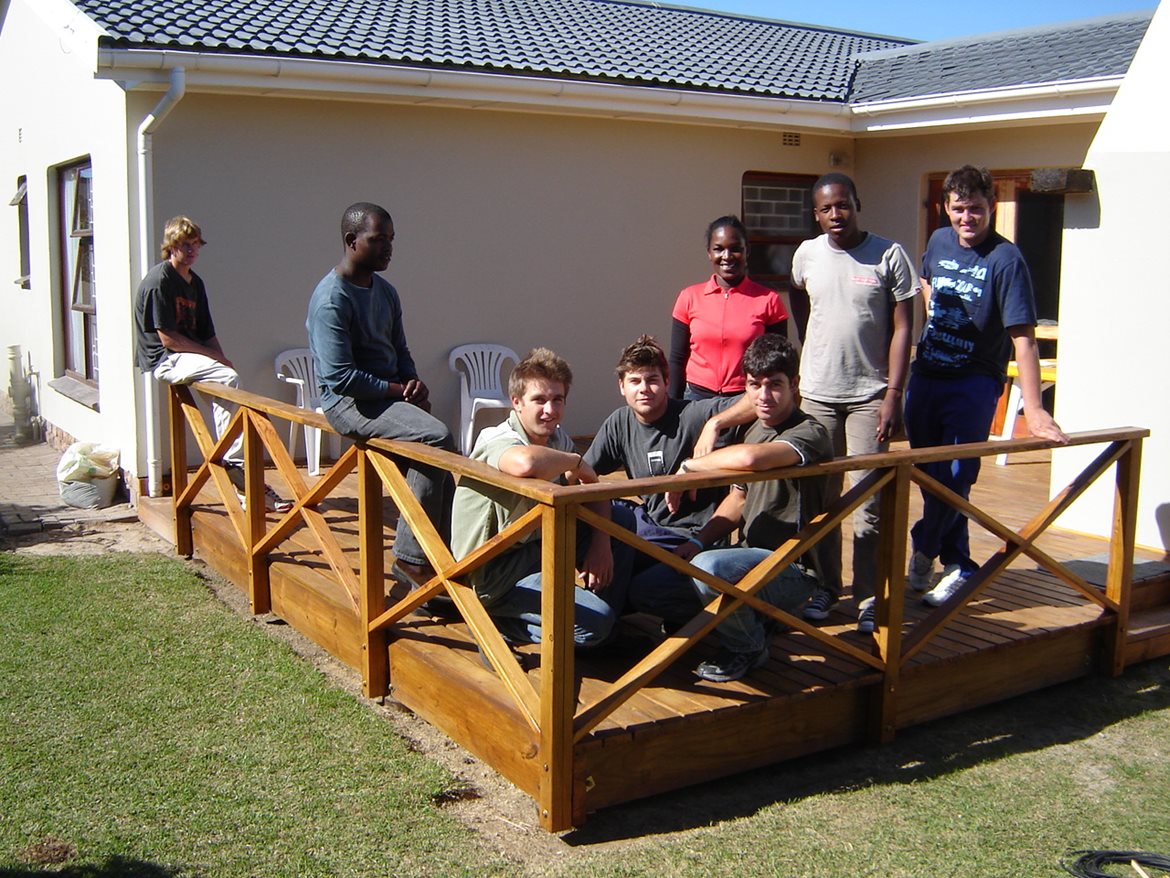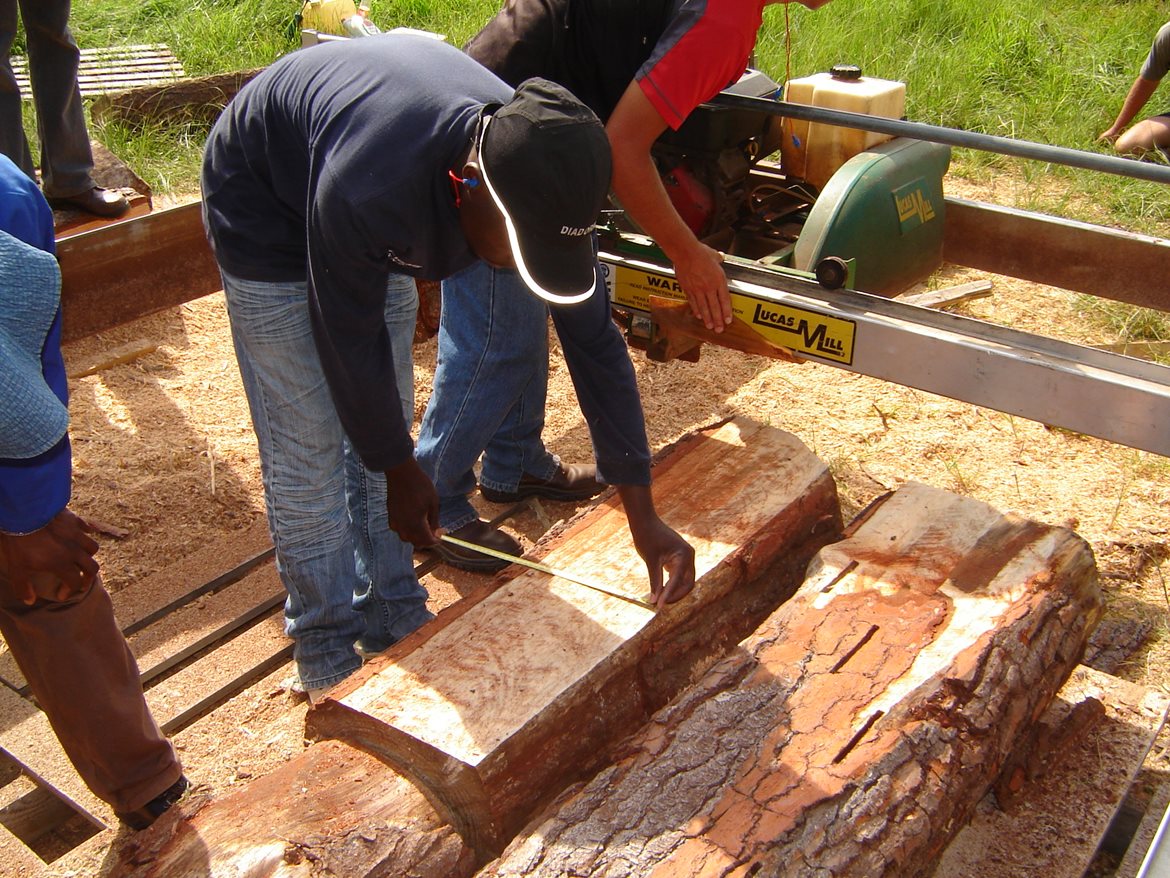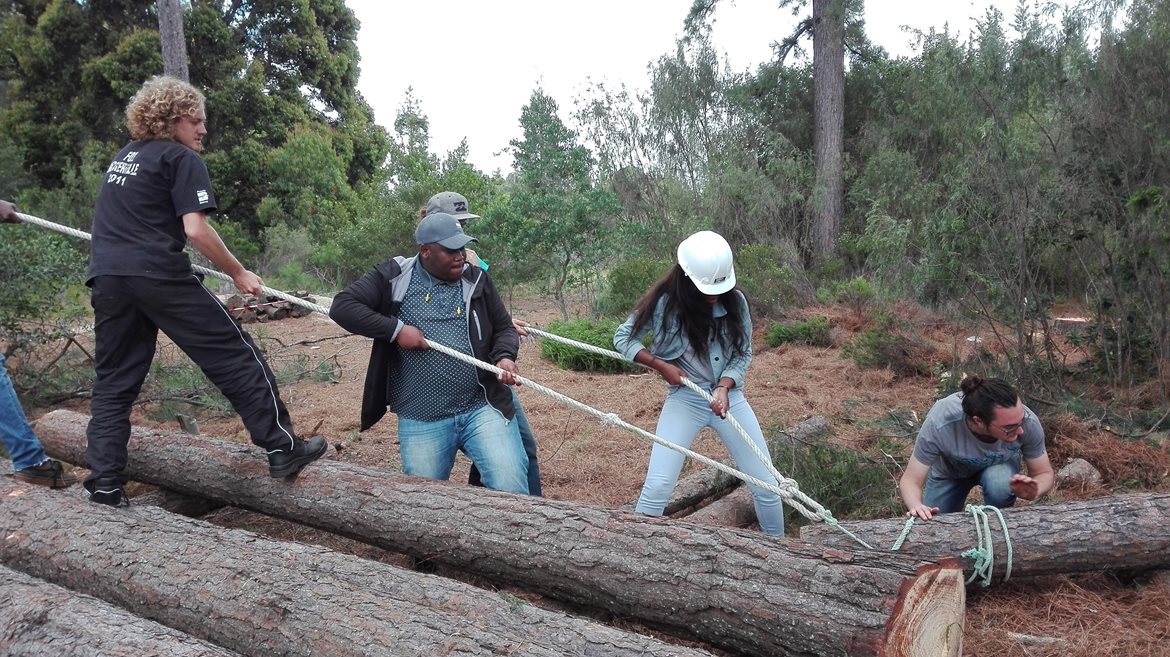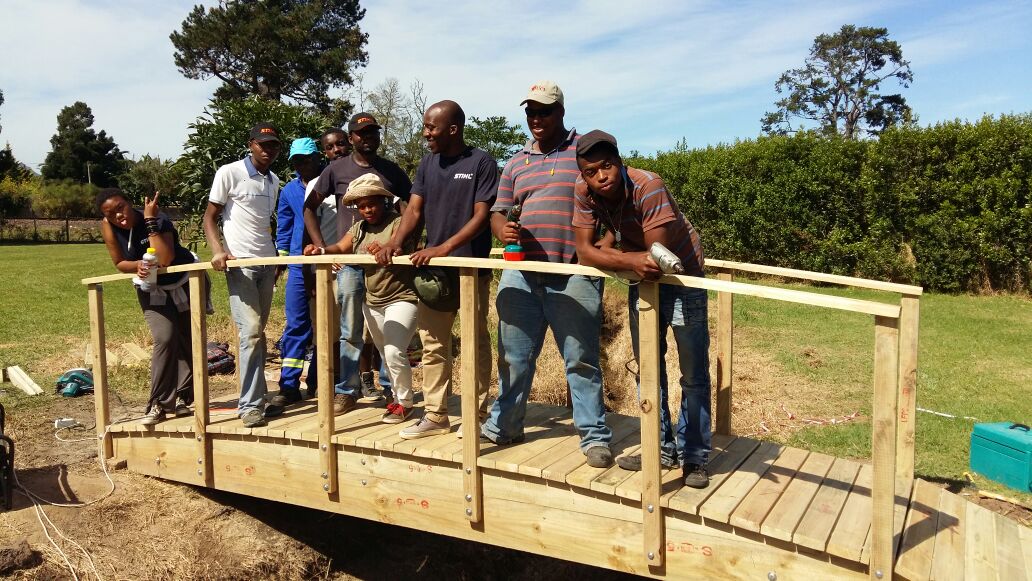These installations also involve students in all three years of the diploma programme.
Installations include the decking around the former Pampoenkraal Guesthouse, now a residence, the boardwalk through the Lovers’ Lane indigenous forest, a workshop for Wood Technology furniture training, the staff deck with pergola at the staff lounge, the cricket pavilion and its roof covering and a storage facility, the soccer pavilion and a wooden deck in front of it, and a frame ramp for mountain bike competitions.
In town the students built a bridge over a dam at the George Botanical Gardens and a wooden deck and pergola for clients.

“These projects all form part of a “file of projects” that third-year students create in their design and “dry” project management exercise. These designs are then built mostly by second years, during their practicum, and the first years are involved in cutting the wood as part of their introduction and general principles course”, says Richard Muller, lecturer in Natural Resources Management.
Wood Technology studies include several practicums as part of their modules and in a two month in-house structured practicum. Students typically process logs into timber, dry the timber and then build the projects of either furniture or timber structures. The timber is usually from windfalls, lightning, fires, or trees that needs to be removed due to development.

A typical situation is that a tree is felled and processed into boards using the Lukas Mill on campus. The Lukas Mill, as a portable mill, is ideal for students to get exposure to the processing of logs into lumber.
The various set-ups and techniques allow for a range of opportunities including firsthand experience in the management and maintenance at sawmills. The timber is stacked in the solar kiln on campus. The kiln has a capacity of 20m3 and is ideal for drying high-density hardwoods. Softwoods like pine is also dried in the kiln, though it is less effective. The kiln runs fool-proof, and the quality results are excellent. The timber dries to a variation between 10 and 12% moisture content.

Students then draw up plans (as part of a module) and present it to University staff and a final design is decided upon. All projects are planned according to project management techniques, which forms part of their curriculum.
Career wise, most students go into the sawmilling industry, whereas others work in timber preservation, board manufacturing, (plywood, particle board), furniture and timber structures or suppliers of sawmilling equipment. Some also start up their own businesses in the timber industry.
“From 1989 when the programme started, until about five years ago, we had a 100% employment rate. Unfortunately, that changed because of increasing student numbers and the lack of government support for the forestry and forest products industries”, says Richard.
Currently, 54 students are studying in the Wood Technology programme.
